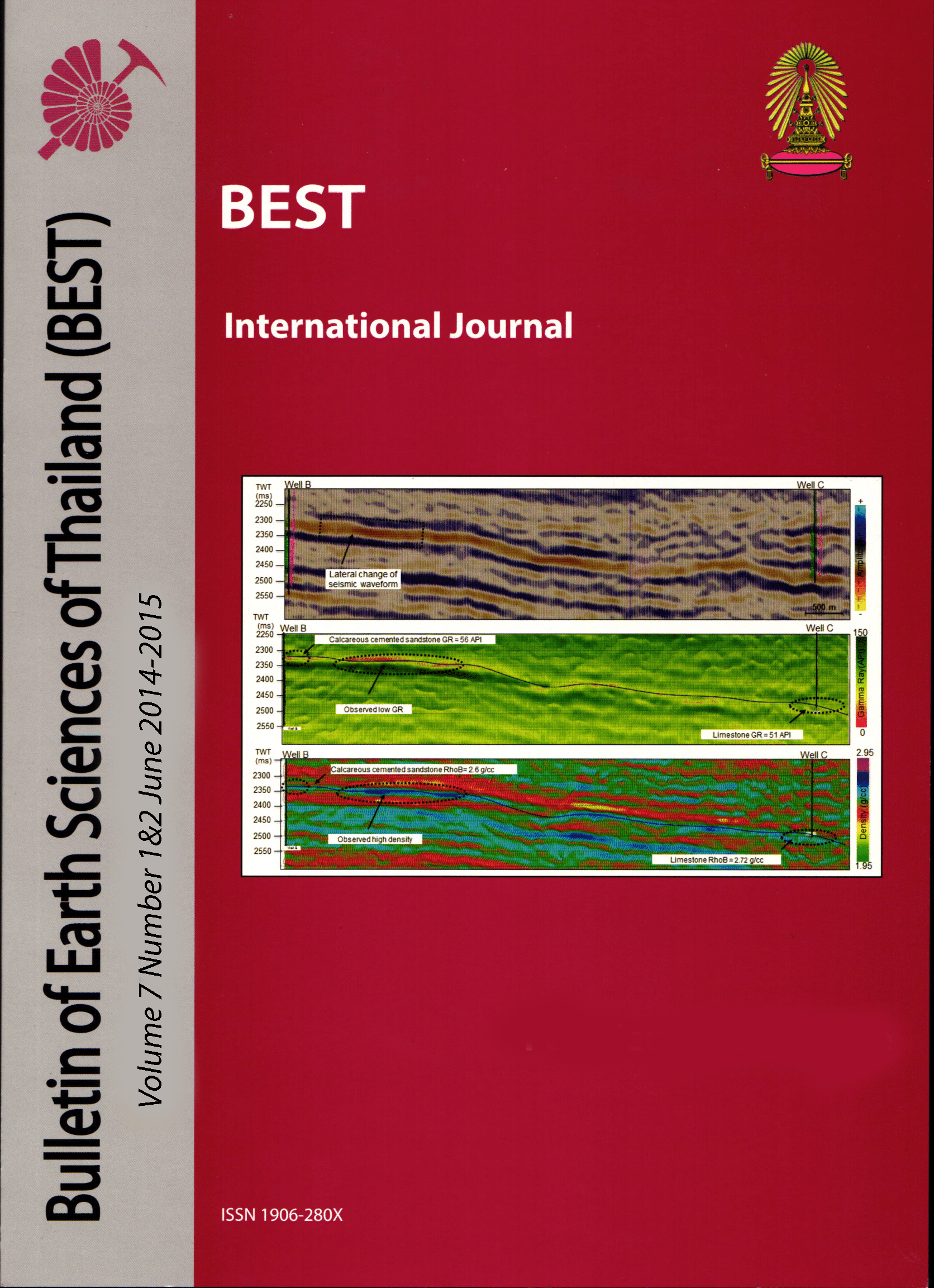Sequence stratigraphy study of Miocene reservoirs in the South China Sea
Main Article Content
Abstract
Reservoir distribution on the shelf in the study area in the South China Sea is known by the drilled wells, although their potential still needs to be investigated. In addition, in the deepwater area sand distribution is not well known. Therefore, the purpose of this study is to investigate sand distribution within the Upper and Middle Miocene in this area with particular emphasis on the deepwater area using sequence stratigraphic
analysis. Integration of 3D seismic data, wireline log data and biostratigraphic information was used. Nearly 1400 km2 of 3D seismic data were interpreted and integrated with the well data to create structure and isochron maps which were created to evaluate the general structural style, the trend of thickness changes and the paleogeography. Seismic amplitude extractions were also used and four paleogeographic maps were constructed for the main intervals of interest.
The results reveal that within the study interval sands are distributed (1) in slope apron/turbidite systems, (2) in deep canyon cut systems and (3) in shelf and shoreface environments. Slope apron/turbidite systems are well developed within the Middle Miocene section. The lower Middle Miocene slope apron/turbidite system was fed by mud/sand mixed supply from the shelf, whereas the sediment supply of the upper Middle Miocene system varies from sand-rich to mud/sand mix. The sand-rich systems could be very good reservoirs in this area. Turbidite systems within the Middle Miocene are limited and are evaluated to be low-efficiency systems with fair reservoir quality. Canyon fill sands at the base of the lower Upper Miocene are potential reservoir targets in this interval, especially where they are fed by sand-rich shelf deposits. Storm-wave based sands in the shelf inter-bedded with mud layers, and sands in shoreface and coastal plain environments are also objectives in this Upper Miocene interval.
Article Details

This work is licensed under a Creative Commons Attribution-NonCommercial-NoDerivatives 4.0 International License.
Copyright © 2008 Department of Geology, Faculty of Science, Chulalongkorn University. Parts of an article can be photocopied or reproduced without prior written permission from the author(s), but due acknowledgments should be stated or cited accordingly.
References
Busch, D. A. (1974). Channel sandstone. In Stratigraphic Traps in Sandstones-- Exploration Techniques (pp. 72-107). America: AAPG.
Cullen, A., Reemst, P., Henstra, G., Gozzard, S., & Ray, A. (2010). Rifting of the South China Sea: new perspectives. Petroleum Geoscience, 16, 273-282. Retrieved from DOI 10.1144/1354-079309-908
Mutti, E., (1992). Turbidite sandstones 275 p (ed.). Italy: Milan
Moulik, S. K., Singh, H. J., Singh Rawat, R. K., Akhtar, M. S., Mayor, S., & Asthana, M. (2009). Sand Distribution Pattern and Depositional Model of Kopili Formation (Eocene) with Special Reference to Sequence Stratigraphic Framework from North Assam Shelf, Assam-Arakan Basin, India. AAPG Annual Convention.
Nichols, G. (2009). Sedimentology and Stratigraphy (2nd ed.). West Sussex, UK: Wiley-Blackwell.
Richards, M., M. Bowman, and H. Reading. (1998). Submarine-fan systems I: characterization and stratigraphic prediction (v. 15, p. 687–717) Marine and Petroleum Geology.


